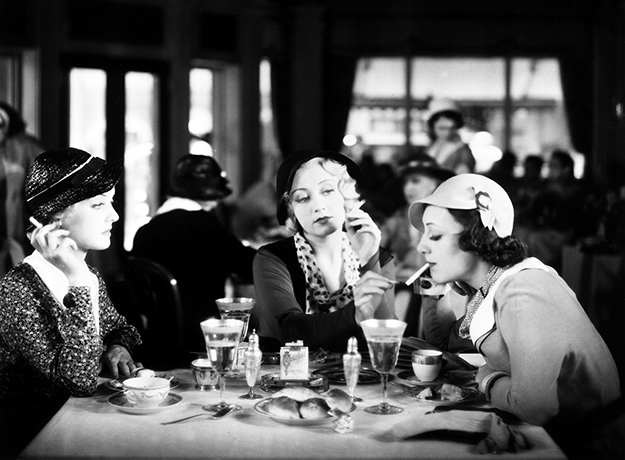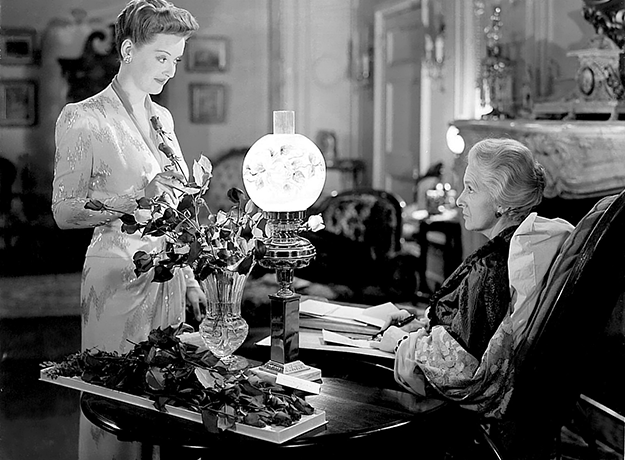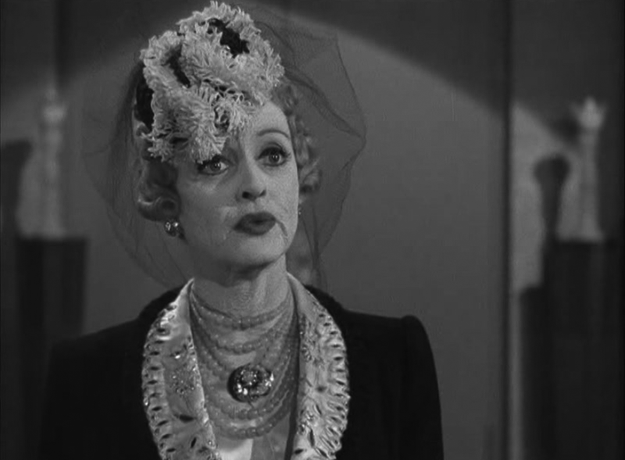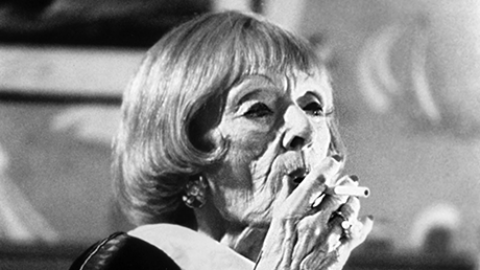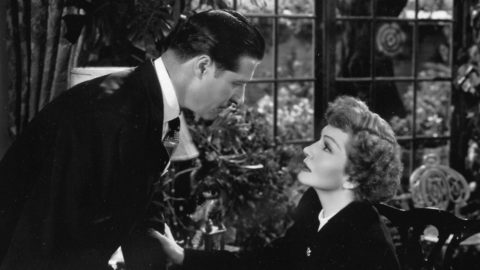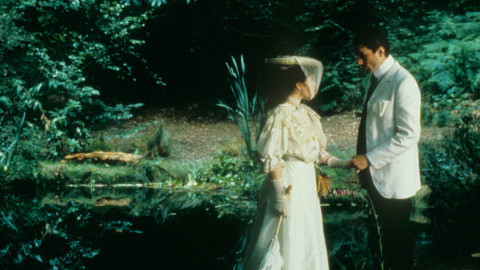The Face of Bette Davis
“Even the most inconsiderable films . . . seemed temporarily better than they were because of that precise nervy voice, the pale ash-blonde hair, the popping neurotic eyes, a kind of corrupt and phosphorescent prettiness . . . I would rather watch Miss Davis than any number of competent pictures.” —Graham Greene, in 1936
Three on a Match
“Corrupt and phosphorescent prettiness” is my favorite phrase ever written about Bette Davis. Graham Greene, who could snark with the best of them when he disliked an actress, captured her unique beauty as no one else ever did. If a face can be said to be controversial, it’s more true of Bette than any other actress, save possibly Barbra Streisand. One of the most unattractive actresses in Hollywood, once sniped some guy on Twitter, whose name I cannot recall since he is now blocked. This indicates, I know, that I lack a certain critical distance. But I can’t help it; I love the sorrows of Bette’s changing face. Insult it at your peril.
The early 1930s offered up a string of off-kilter beauties—Ann Dvorak and Joan Blondell were two others—but the eye went to Davis, even in Three on a Match, when she had decidedly the least interesting part. Her skin did indeed seem to glitter, her mouth (despite the hard-drawn lip lines of the time) could be a demure bow one moment, wide and startlingly sexual the next.
And the forehead could tell you almost as much as those immortal, hyper-prominent eyes. Look at Charlotte Vale, nagged into a nervous wreck at the beginning of Now, Voyager. Berated by mother Gladys Cooper or mocked by bitchy niece Bonita Granville, Davis’s forehead stays smooth, as though flattened by the effort to ignore the daily abuse. And when she finally lets fly—“Go on, make fun of me! You think it’s fun making fun of me!”—the forehead wrinkles to meet those centipede eyebrows as though she’s trying to make her whole brain smaller and crowd out all the pain. Later, when Charlotte has emerged as a beauty with the courage to confront her dragon mother, we know her courage won’t desert her because the brow remains smooth, determined, unflinching. The chin never drops.
Now, Voyager
Part of the reason Davis’s looks are frequently insulted is, of course, tied to how she looked past, say, All About Eve—still a striking woman, but not one who’s trying to pass as youthful. Still later, illness and hard knocks carved Davis into a driftwood sculpture, sitting on talk shows and daring you to find her anything less than fascinating. She took the process of age and even dared to take it all the way to grotesque for What Ever Happened to Baby Jane?, a feat that remains unusual for a middle-aged actress. (By comparison, Charlize Theron in Monster is playing dress-up; Davis knew a lot of male critics and filmgoers already thought she’d gone from plain-Jane to crone.) I love Joan Crawford, too, but look at how Joan presents herself as a maybe-hatchet-murderer in Strait-Jacket, and how Olivia de Havilland looks co-starring with Davis in Hush…Hush, Sweet Charlotte. Playing another Charlotte, Davis wanted to look the way a woman who’s been shut away from society for decades might really look.
“I got old the way women who aren’t actresses got old,” said Simone Signoret, a onetime beauty who also let the wrinkles have their way. Davis knew how much Hollywood valued beauty, but she never set much store by her own looks, and never seems to have done much to preserve them. “Christ, I was always bitching about how I hated my face in those days,” an elderly Davis once said of her early starlet years at Warner Brothers, in Whitney Stine’s Conversations with Bette Davis. “Compared to what I look like now, I was an absolute living doll!”
How many stars of that era, or even our own, were so frank about their relationship to their looks? She valued the malleability of her face. The fact that Davis was surrounded by world-class beauties, and never thought she was of that ilk, gave her deep understanding of her fellow women, our vanities and our fears.
Mr. Skeffington
One of my favorite Bette Davis performances, Mr. Skeffington, is perhaps the ultimate illustration. Davis plays Fanny Skeffington, a vain and frivolous woman who neglects her kindly husband (Claude Rains in the title role) and her sensitive daughter in favor of endless parties and holding court over a group of fawning suitors. Wearing period wigs that don’t do much for her, Davis has the manner of a beautiful woman nailed so perfectly that even if you don’t find her gorgeous, you absolutely believe that others do. The actress understood that beauty is about how you present yourself, and how you expect the world to treat you. And somehow, whether from genetic luck or constant maintenance, Fanny stays uncannily youthful for a long time.
Then, Fanny comes down with diphtheria, and nearly overnight, her looks are gone. Davis herself insisted on makeup for these later scenes that turned Fanny into a dry run for Baby Jane. Over the years, that choice has come in for a lot of sniping, along the lines of, “It was diphtheria, not flesh-eating bacteria.” I think Davis was playing a deeper truth. Scan the comments section of any gossip site; it doesn’t take that much for people jeer at what time does to a once-exquisite face. Davis was taking that reaction, and showing what it would mean to have age truly be as catastrophic as we think it is. The men who once loved Fanny recoil, as some people would later recoil from Bette Davis, who they never thought was pretty in the first place.
In my favorite scene in Mr. Skeffington, Claude Rains tells his wife that a woman is beautiful when she’s loved. Davis retorts, as only Davis can: “A woman is beautiful when she has eight hours’ sleep and goes to the beauty parlor every day. And bone structure has a lot to do with it, too.” In other words, beauty is not that hard to obtain, especially in youth, nor is it a sign of character. Any face in a Ziegfeld chorus line was beautiful, and looking at them still gives undeniable pleasure. But it ain’t like rewatching Now, Voyager, that’s for sure. A face like that of Bette Davis—that’s rare, damn it.
Farran Smith Nehme writes about classic film on her blog, Self-Styled Siren, and recently published her first novel, Missing Reels. She is a member of the New York Film Critics Circle.



